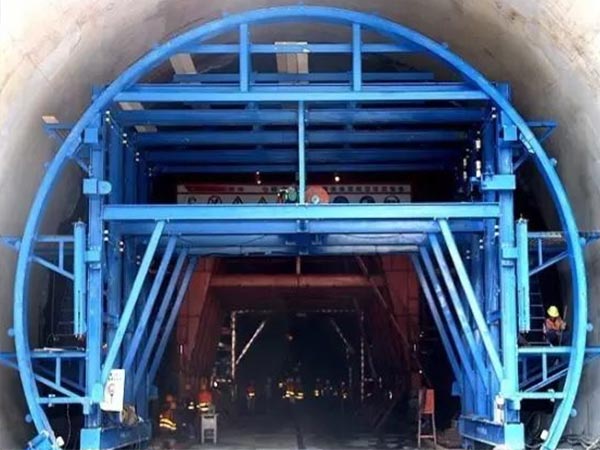In the intricate and challenging world of tunnel construction, the tunnel lining formwork stands as a crucial component that ensures the structural integrity and safety of underground passageways. Designed to facilitate the pouring of concrete onto tunnel walls, this specialized formwork plays a pivotal role in shaping and supporting the final structure. This article delves into the importance, design, and application of tunnel lining formwork, shedding light on its critical function in the successful execution of tunneling projects.

1. Design and Structure:
- Tunnel lining forms are typically made of steel or aluminum for strength and durability.
- They are designed to conform to the curvature of the tunnel, ensuring a precise and consistent lining.
- The formwork can be segmented or continuous, depending on the tunnel's design and construction method.
2. Types of Tunnel Lining Formwork:
- Fixed Formwork: Used for shorter tunnel sections, where the formwork is installed and then moved after the concrete has set.
- Moving Formwork: Used for longer tunnels, this type of formwork can be repositioned as construction progresses, allowing for continuous concrete pouring.
3. Applications:
- Primary Lining: Provides initial structural support immediately after excavation.
- Secondary Lining: Serves as the final lining, offering additional support, waterproofing, and a smooth interior surface for the tunnel.
4. The Role of Tunnel Lining Formwork:
Tunnel lining formwork serves as a temporary mold for concrete, providing the necessary shape and support until the concrete reaches its full strength. This formwork is typically made from steel or aluminum, chosen for their durability and ability to withstand the pressures exerted by wet concrete. It not only helps in maintaining the structural integrity of the tunnel but also ensures that the walls are smooth, watertight, and free from defects.
5. Design and Construction:
The design of tunnel lining formwork is a meticulous process that takes into account various factors such as the tunnel's diameter, the type of soil, and the expected loads. It is often modular, allowing for easy assembly and disassembly, which is essential in the confined spaces of tunnel construction. Specialized components such as hydraulic jacks and adjustable supports are integrated to ensure precise alignment and stability during the concrete pouring process.
6. Advantages:
Tunnel lining formwork is indispensable in the construction of tunnels for various applications, including transportation, water supply, and utility conduits. Its use ensures that the tunnel walls are structurally sound and capable of withstanding the forces of the surrounding soil and water pressure. Additionally, the formwork's ability to create smooth, watertight surfaces minimizes the need for extensive finishing work, saving time and resources.
The tunnel lining formwork is a critical element in the successful execution of tunneling projects. Its role in shaping and supporting the concrete during the construction phase is paramount to achieving a tunnel that is safe, durable, and efficient. As technology advances, so too does the design and functionality of tunnel lining formwork, continuously pushing the boundaries of what is possible in underground construction.




